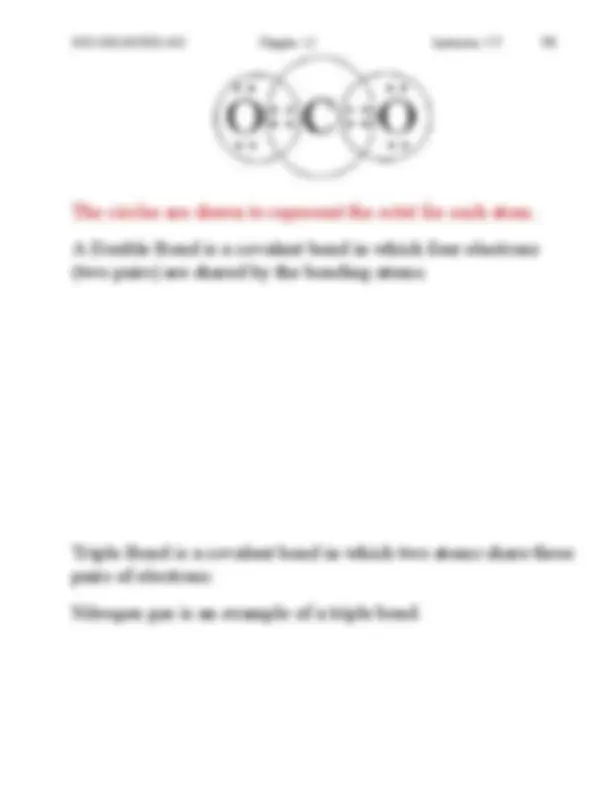








Study with the several resources on Docsity

Earn points by helping other students or get them with a premium plan


Prepare for your exams
Study with the several resources on Docsity

Earn points to download
Earn points by helping other students or get them with a premium plan
Community
Ask the community for help and clear up your study doubts
Discover the best universities in your country according to Docsity users
Free resources
Download our free guides on studying techniques, anxiety management strategies, and thesis advice from Docsity tutors
An introduction to covalent bonds, explaining how they form through the sharing of valence electrons between atoms. It covers the concept of noble gas configuration, the role of hydrogen and halogens in covalent bonding, and the use of Lewis diagrams for visualization. The document also discusses unequal sharing of electrons, double and triple bonds, and resonance structures in molecules.
Typology: Exams
1 / 12

This page cannot be seen from the preview
Don't miss anything!







Sodium contributes electron, leaving it with a closed shell
Chlorine gains electron, leaving it with a closed shell
Try to draw the Lewis Dot symbol for carbon dioxide, CO 2. You will encounter a problem. Carbon has 4 valence electrons, and the two oxygen together have 12 ,( 2 x 6 ), for a total of 16 electrons. The two possible structures that can be drawn for carbon dioxide can be these:
In either case, carbon or oxygen will not have eight electrons represented. However, if each oxygen atoms shares two pairs of electrons with the carbon atom, double bonds would be formed, and octets around both carbon and oxygen can be achieved.
The circles are drawn to represent the octet for each atom.
A Double Bond is a covalent bond in which four electrons (two pairs) are shared by the bonding atoms.
Triple Bond is a covalent bond in which two atoms share three pairs of electrons.
Nitrogen gas is an example of a triple bond.
between the possible symbol.
Electronegativity is a measure of the ability of an atom in a molecule to draw bonding electrons to itself.
The most commonly used scale of electronegativity is that developed by Linus Pauling in which the value 4.0 is assigned to fluorine, the most electronegative element.
An important application of electronegativity is in the prediction of the polarity of a chemical bond.